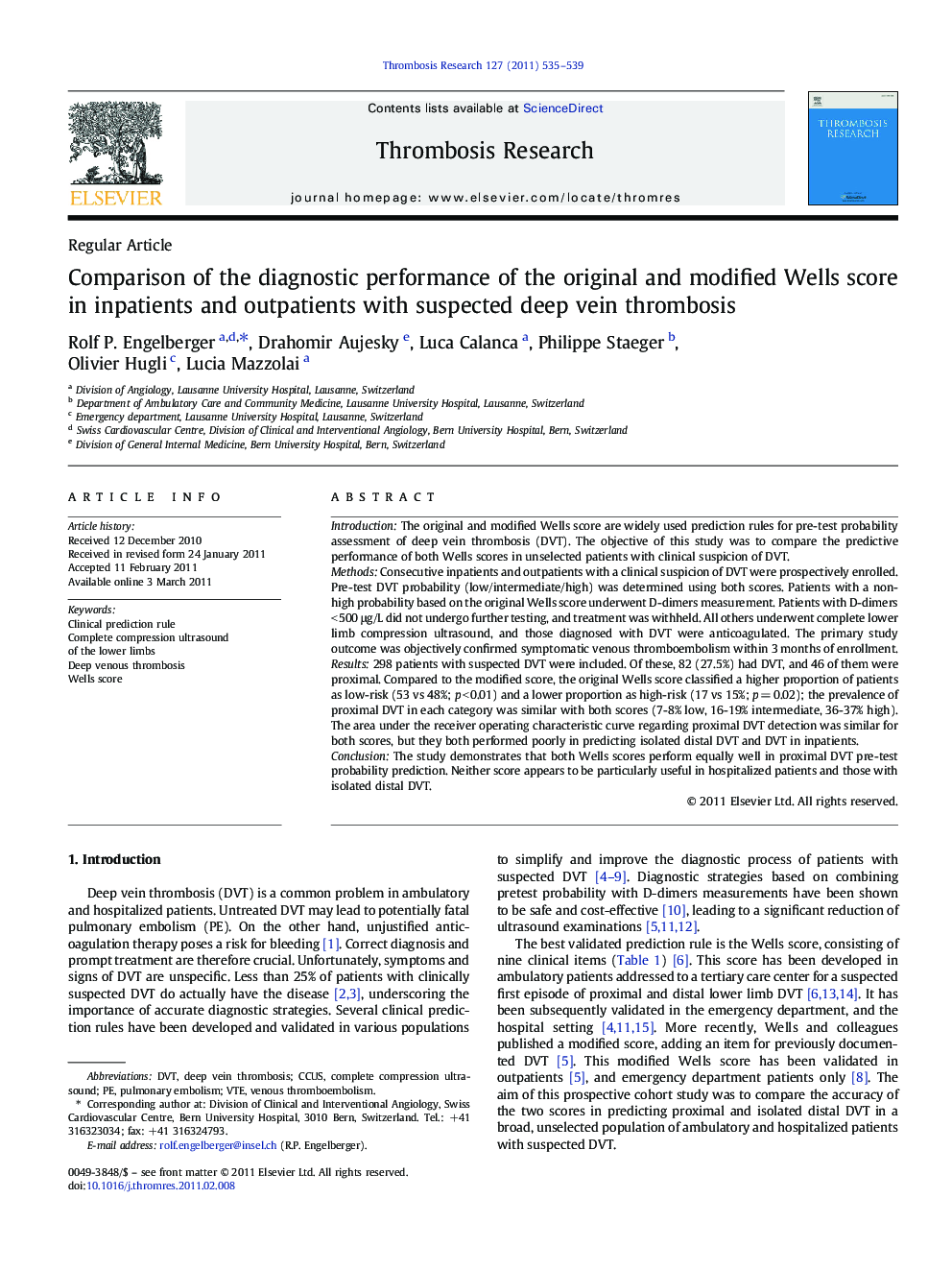| Article ID | Journal | Published Year | Pages | File Type |
|---|---|---|---|---|
| 3028848 | Thrombosis Research | 2011 | 5 Pages |
IntroductionThe original and modified Wells score are widely used prediction rules for pre-test probability assessment of deep vein thrombosis (DVT). The objective of this study was to compare the predictive performance of both Wells scores in unselected patients with clinical suspicion of DVT.MethodsConsecutive inpatients and outpatients with a clinical suspicion of DVT were prospectively enrolled. Pre-test DVT probability (low/intermediate/high) was determined using both scores. Patients with a non-high probability based on the original Wells score underwent D-dimers measurement. Patients with D-dimers < 500 μg/L did not undergo further testing, and treatment was withheld. All others underwent complete lower limb compression ultrasound, and those diagnosed with DVT were anticoagulated. The primary study outcome was objectively confirmed symptomatic venous thromboembolism within 3 months of enrollment.Results298 patients with suspected DVT were included. Of these, 82 (27.5%) had DVT, and 46 of them were proximal. Compared to the modified score, the original Wells score classified a higher proportion of patients as low-risk (53 vs 48%; p < 0.01) and a lower proportion as high-risk (17 vs 15%; p = 0.02); the prevalence of proximal DVT in each category was similar with both scores (7-8% low, 16-19% intermediate, 36-37% high). The area under the receiver operating characteristic curve regarding proximal DVT detection was similar for both scores, but they both performed poorly in predicting isolated distal DVT and DVT in inpatients.ConclusionThe study demonstrates that both Wells scores perform equally well in proximal DVT pre-test probability prediction. Neither score appears to be particularly useful in hospitalized patients and those with isolated distal DVT.
